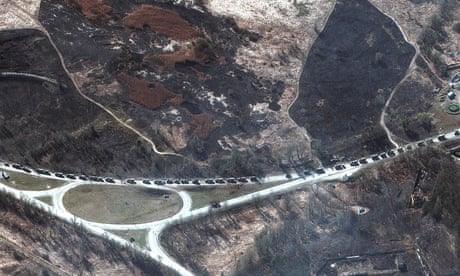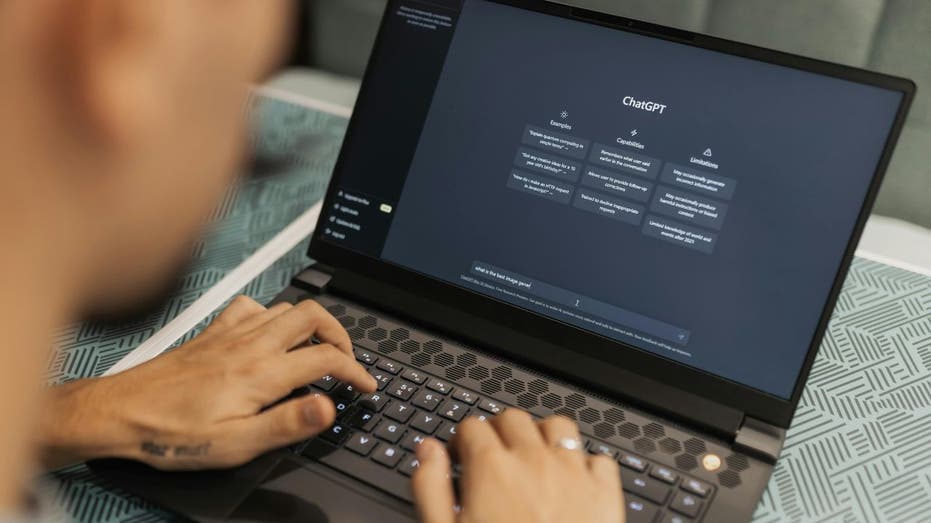- by foxnews
- 08 Apr 2025
The drone operators who halted Russian convoy headed for Kyiv
The drone operators who halted Russian convoy headed for Kyiv
- by theguardian
- 29 Mar 2022
- in technology

One week into its invasion of Ukraine, Russia massed a 40-mile mechanised column in order to mount an overwhelming attack on Kyiv from the north.
But the convoy of armoured vehicles and supply trucks ground to a halt within days, and the offensive failed, in significant part because of a series of night ambushes carried out by a team of 30 Ukrainian special forces and drone operators on quad bikes, according to a Ukrainian commander.
The Ukrainian soldiers were equipped with night vision goggles, sniper rifles, remotely detonated mines, drones equipped with thermal imaging cameras and others capable of dropping small 1.5kg bombs.
The Aerorozvidka unit also claims to have helped defeat a Russian airborne attack on Hostomel airport, just north-west of Kyiv, in the first day of the war, using drones to locate, target and shell about 200 Russian paratroopers concealed at one end of the airfield.
Not all the details of these claims could be independently verified, but US defence officials have said that Ukrainian attacks contributed to the halting of the armoured column around Ivankiv. The huge amount of aerial combat footage published by the Ukrainians underlines the importance of drones to their resistance.
Honchar is an ex-soldier turned IT marketing consultant, who returned to the army after the first Russian invasion. Taras, who asked not to use his surname, was a management consultant, who specialised in fundraising for the unit and only joined full-time as a combatant in February.
In its early days, the unit used commercial surveillance drones, but its team of engineers, software designers and drone enthusiasts later developed their own designs.
They built a range of surveillance drones, as well as large 1.5-metre eight-rotor machines capable of dropping bombs and rocket-propelled anti-tank grenades, and created a system called Delta, a network of sensors along the frontlines that fed into a digital map so commanders could see enemy movements as they happened. It now uses the Starlink satellite system, supplied by Elon Musk, to feed live data to Ukrainian artillery units, allowing them to zero in on Russian targets.
The unit was disbanded in 2019 by the then defence minister, but it was hastily revived in October last year as the Russian invasion threat loomed.
Furthermore, some of the advanced modems and thermal-imaging cameras made in the US and Canada are subject to export controls, so they have resorted to crowdfunding and asking a global network of friends and supporters to find them on eBay or other websites.
Marina Borozna, who was an economics student at university with Taras, is exploring ways of buying what the unit needs and finding routes to get the supplies across the border.
Her partner, Klaus Hentrich, a molecular biologist in Cambridge, is also helping the effort, drawing on his experience as a conscript in the German army.
The unit is also looking at ways to overcome Russian jamming, part of the electronic warfare being waged in Ukraine in parallel to the bombs, shells and missiles. At present, Aerorozvidka typically waits for the Russians turn off their jamming equipment to launch their own drones, and then it sends up its machines at the same time. The unit then concentrates its firepower on the electronic warfare vehicles.
- by foxnews
- descember 09, 2016
Ancient settlement reveals remains of 1,800-year-old dog, baffling experts: 'Preserved quite well'
Archaeologists have recently unearthed the remarkably well-preserved remains of a dog from ancient Rome, shedding light on the widespread practice of ritual sacrifice in antiquity.
read more





